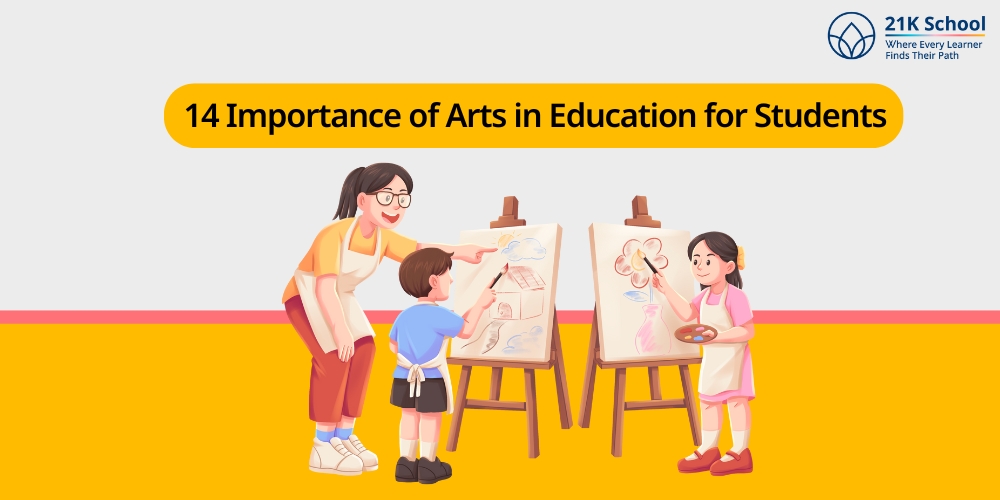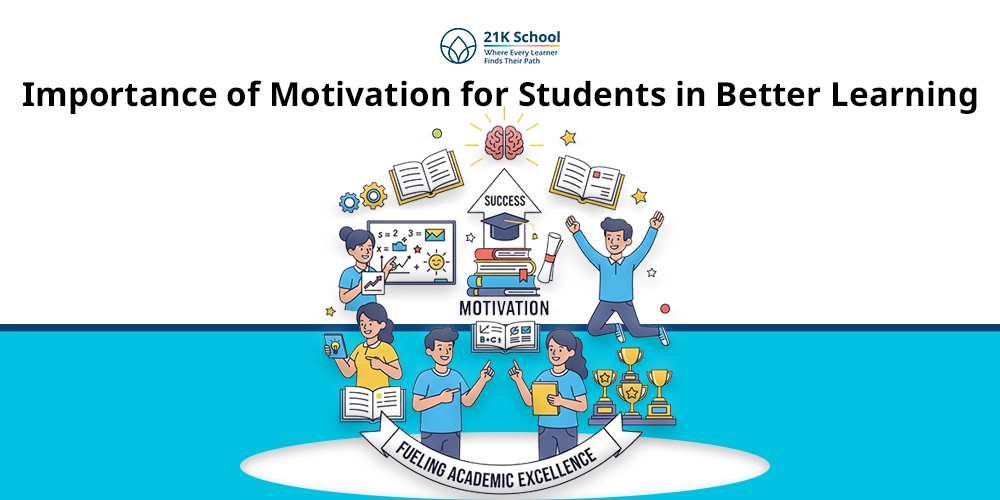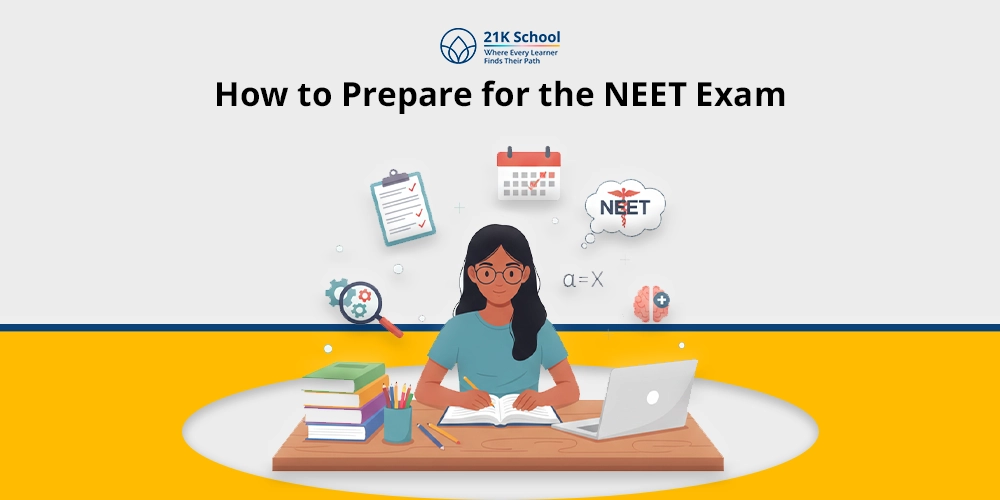
Ever wonder why Art is important in education ?
Now art education is everywhere. What art education is, is music, theater, dance and visual arts education.
21st-century skills need arts in education, creativity, critical thinking , problem-solving, and communication.
They increase emotional intelligence , self-expression & empathy , reduce stress & improve academic performance in core subjects.
Furthermore, arts education teaches cultural awareness , adaptability, patience and collaboration for success in a career and also in a global society.
Contents
- 1 What is Art in Education?
- 2 Top 14 Importance of Arts in Education
- 2.1 1. Improves Motor Skills
- 2.2 2. Enhance Academic Success
- 2.3 3. Boost Confidence
- 2.4 4. Enhance Critical Thinking Skills
- 2.5 5. Increases Concentration
- 2.6 6. Future Career Opportunity
- 2.7 7. Develops Emotional Intelligence
- 2.8 8. Builds Decision-making Skills
- 2.9 9. Cognitive Development
- 2.10 10. Promotes Social Skills
- 2.11 11. Enhances Creative Thinking Skills
- 2.12 12. Promotes Cultural Awareness
- 2.13 13. Develops Patience and Discipline
- 2.14 14. Improves Communication and Collaboration Skills
- 3 Conclusion
What is Art in Education?
Art in education means artistic and creative activities for students ‘cognitive, emotional and social development. Arts are considered a part of a whole education – critical thinking, problem solving , and working together skills are taught.
By including visual arts, music, drama and dance teachers can make learning more interesting and students can express ideas better. By being involved in the arts students learn more than technical things like playing an instrument or painting a picture. They also learn creative thinking, problem-solving skills and collaboration skills .
In education art’s about making learning fun and interesting by having students make things happen in their world with creativity. Also it gives students confidence, focus and understanding of other cultures and ideas.
Top 14 Importance of Arts in Education
Arts in education are very important for students ‘development in general. Including visual arts, music, dance and drama in the curriculum increases creativity, critical thinking, communication and emotional intelligence. Here are some of the reasons Arts are important in education .
1. Improves Motor Skills
Arts involvement improves fine & gross motor skills in children. Moving around like this when you paint, cut, sculpt or play an instrument takes precise coordination.
All these physical developments are good for your physical health and also for your neurological development because new neural pathways are formed by repeated practice/physical engagement.
2. Enhance Academic Success
Arts education prepares students for school. For music you need rhythms and beat patterns in maths and for drawing or designing you need spatial reasoning and geometry too.
The arts also increase interest in learning , reduce dropout rates and attendance.
3. Boost Confidence
Arts in education build students confidence by allowing them to be creative and to grow personally. Arts also help students be resilient and grow mentally.
In a safe, positive environment, learners get constructive feedback without fear of failure. If students can get over difficulties or fears about performance or creation they build an internal belief in themselves – which is useful in all areas of life.
4. Enhance Critical Thinking Skills
Through arts education, one learns to think critically and independently. Whether analysing a work of music or a painting for symbolism, students learn to assess, interpret and rate content.
But also in the creative process itself there is always more problem-solving, experimentation and refinement of analytic and strategic planning skills.
5. Increases Concentration
Making art takes concentration and mental discipline. They need to concentrate on the small things – like dancing routines or dramatic scenes or scales on an instrument – and to follow complicated instructions.
This improved concentration carries over to other academic and personal pursuits. And the discipline that is developed through artistic practice helps students become more mindful and sustained in their attention and retain more information.
6. Future Career Opportunity
Strong arts backgrounds open up many different career paths – directly or indirectly – related to the arts. Creative industries like design, animation, film production, advertising, architecture, music and fashion are all very interesting.
Arts-based learning also prepares students for entrepreneurship, self-employment in digital media and freelance creative work as well.
7. Develops Emotional Intelligence
Arts help students develop emotional intelligence – to express and understand their own and other people’s emotions.
Artists help students process hurt feelings, emotional stress and empathy. Emotional literacy is learning about other people, relationships and personal issues.
8. Builds Decision-making Skills
So color palettes, character motivations and movement patterns are choices in art too. These choices make students think about options, consequences and responsibility for their work.
Students learn that not all decisions will be successful so they have to change, revise or restart – a lesson in persistence and growth mindset. Such decision-making skills are applicable to creative as well as everyday life, leadership and future careers.
9. Cognitive Development
Arts stimulate whole brain activity in memory, language, motor function and emotion – in other words cognitive development of the child .
Brain function is improved by creative processes as well as executive functioning skills like organisation, attention control and problem solving. Such cognitive stimulation improves arts and non-arts academic performance of students.
10. Promotes Social Skills
Arts education is performing in a group, painting a mural or giving a classroom critique. They teach active listening, teamwork, empathy, respect for differing opinions and communication.
That builds collaboration and co – learning. In many arts projects also social causes are promoted through artistic expression and civic responsibility.
11. Enhances Creative Thinking Skills
Arts education makes students think creatively. That kind of creative thinking helps them with problems, with flexibility of thought, with new possibilities.
These are very important today – in school, work and everyday life creativity and innovation are very important.
12. Promotes Cultural Awareness
Arts in education also make students more culturally aware. Through exposure to music/dance, visual arts, literature, and theatre, students find out about the traditions/histories/values of other cultures around the world.
That teaches them to be more open to diversity and to the idea that every culture is a way of expressing identity, emotion and experience. This cultural awareness is good for learning, for global citizenship and for a compassionate society.
13. Develops Patience and Discipline
Sometimes art takes time, effort and persistence. But to play an instrument or paint a portrait or sing you need planning, practicing, refining and finishing.
That makes students patient when they have problems that have no immediate result. These habits carry over into other academic and personal areas like task management, deadlines and problem-solving habits.
14. Improves Communication and Collaboration Skills
Designed for students with difficulty writing or speaking who wish to say something, feel something or express a point of view.
Whether it’s drawing, music, dance or drama, art lets students express themselves. Those experiences help students tune in to others, share duties, give and get feedback and work for a good cause.
Conclusion
But art education teaches much more than that. They learn creativity, critical thinking, emotional intelligence and social skills so students become confident and adaptable people.
With arts they build focus, problem-solving and collaboration for many different careers and life challenges. Arts education also teaches cultural awareness and tolerance of other points of view.
And by integrating arts in education we make it a more personal and academic environment that every student should have.


